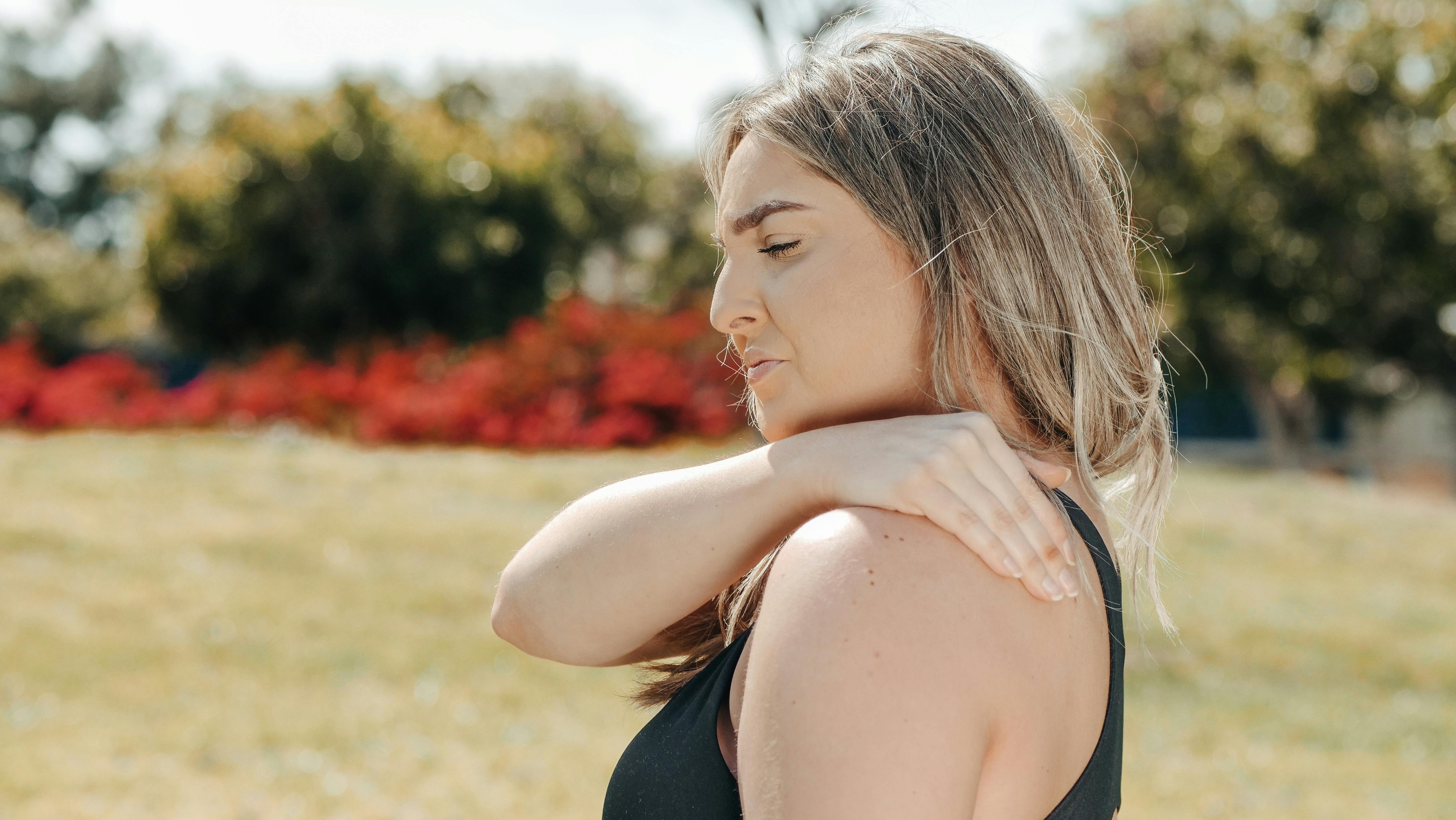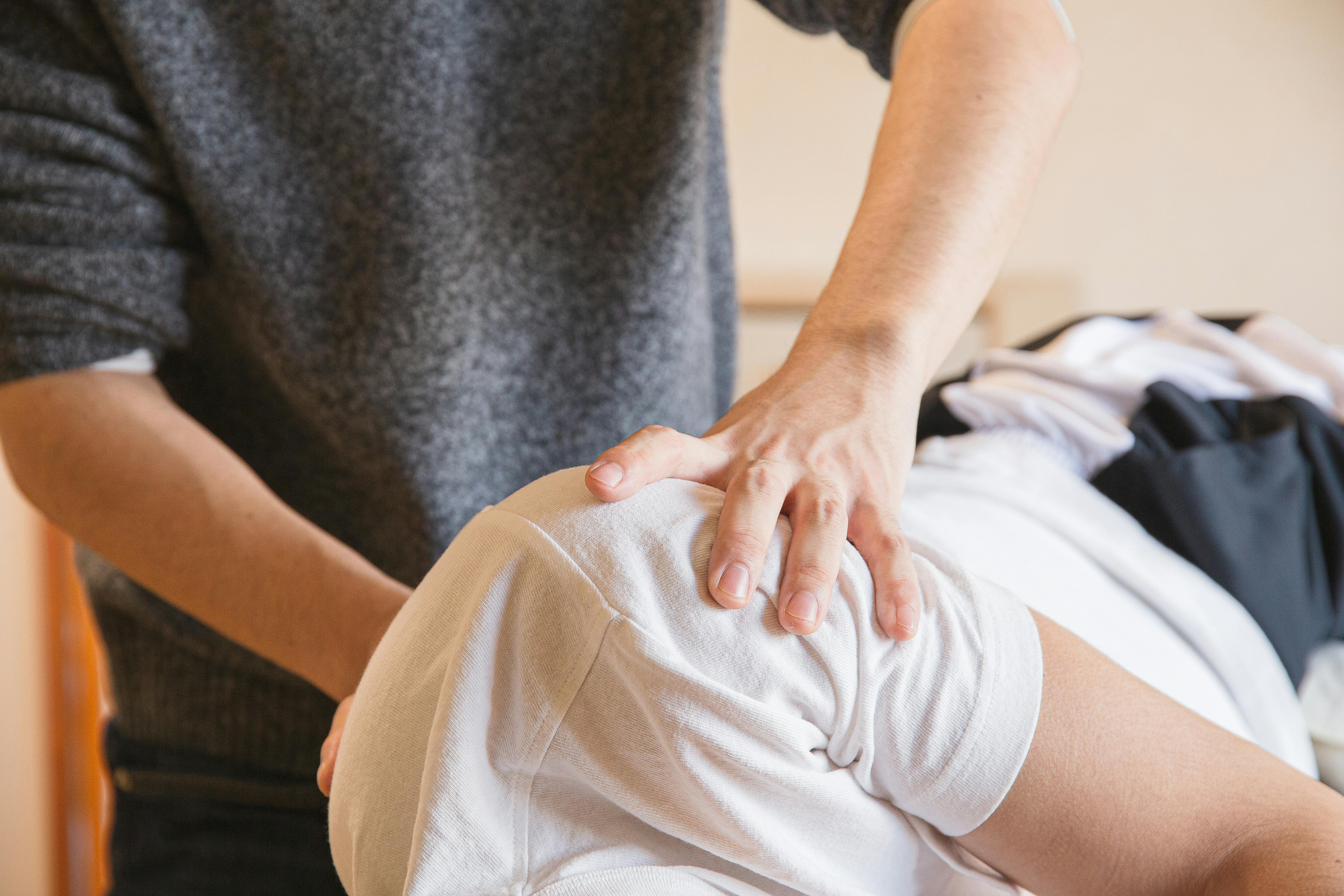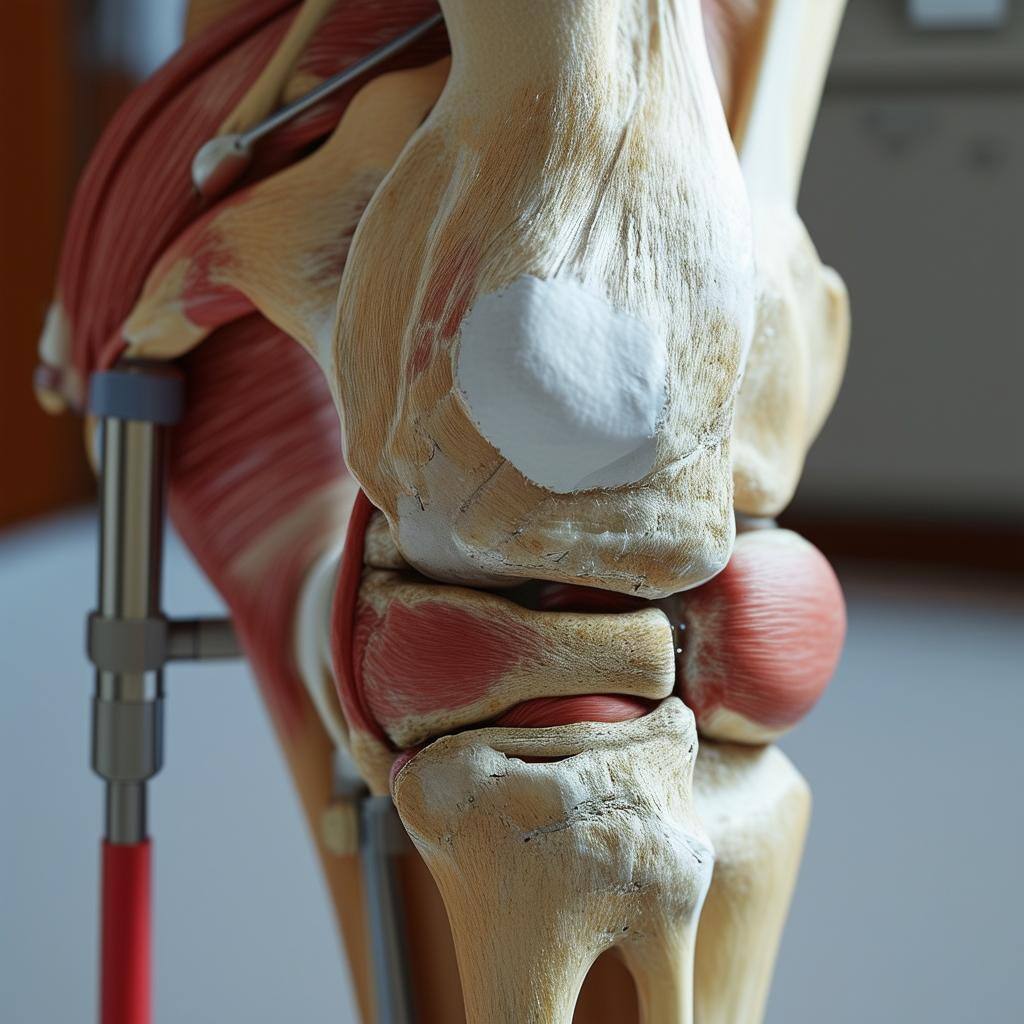
Introduction
Knee pain is a common issue that affects people of all ages, often leading to difficulty in performing everyday activities. It's essential to recognize not just how to alleviate this discomfort but also the factors that exacerbate it. Identifying habits and elements in your environment that could be making knee pain worse is the first step towards a more comfortable life.
This article sheds light on common mistakes that may be intensifying your knee pain. From the shoes on your feet to the arrangement of your living space, every choice can have a significant impact on knee health. By exploring these factors, readers will gain insight into how everyday decisions contribute to their discomfort and what changes can lead to improvements.
Expect practical advice on:
- Choosing the right support gear for your knees
- How lifestyle choices influence knee pain
- The role of exercise in managing knee health
- The connection between weight and knee discomfort
- Home modifications for better mobility and reduced knee strain
Armed with this knowledge, you'll be equipped to make informed decisions about managing knee pain effectively.
1. Wrong Support Gear
When it comes to managing knee pain, the gear you use can play a pivotal role. Selecting the right type of shoes, braces, and canes is crucial for knee pain relief and preventing further damage. Here's how these support items impact your knee health:
Improper Footwear and Knee Pain
- Alignment Matters: Shoes that lack proper support can lead to poor leg alignment, placing extra stress on your knees.
- Cushioning: Without adequate cushioning, shoes fail to absorb shock effectively, causing jarring impacts on the joints with each step.
- Arch Support: Shoes should match your foot's arch type; improper arch support can alter gait and add strain to the knee joint.
Supportive Shoes: Allies in Knee Pain Relief
- Stability: Quality shoes provide stability, reducing the risk of slips and twists that can exacerbate knee issues.
- Fit is Key: Well-fitted shoes ensure even weight distribution, lessening undue pressure on any one part of the knee.
- Specialized Footwear: Consider orthopedic shoes or insoles designed specifically for those with knee pain.
Braces and Canes: Benefits and Limitations
Braces for Knees:
- Added Support: Braces offer additional joint stability which may alleviate pain during movement.
- Targeted Relief: Some braces are designed to offload pressure from specific areas of the knee.
- Not a Cure-All: While braces aid in stability, relying solely on them can lead to muscle weakening over time.
Canes for Assistance:
- Weight Redistribution: Canes help redistribute body weight from the knees to the upper body.
- Proper Usage is Crucial: Incorrect cane height or using it on the wrong side can actually worsen knee pain.
Selecting the right support gear is more than just comfort; it's about protecting your knees from additional harm. Consult with healthcare professionals like physical therapists or podiatrists who can guide you towards making informed choices about shoes, braces, and canes tailored to your specific needs. This proactive approach can significantly impact your journey towards knee pain relief.
Keeping these points in mind ensures that you are not inadvertently contributing to your discomfort through something as simple as choosing the wrong footwear or misusing supportive devices. With careful consideration of your support gear, you set a solid foundation for healthier knees as you move onto other aspects of lifestyle that influence knee health.
2. Impact of Lifestyle on Knee Pain
Sedentary Lifestyle: A Silent Culprit
Living a sedentary lifestyle can sneakily ramp up knee pain. When you don't move much, your joints can become stiff, and your muscles weaken, including those that support the knees. This lack of strength and flexibility means more strain falls directly on the knee joint whenever you do move, leading to increased discomfort.
- Stiff Joints: Extended periods of sitting can cause knee joints to set in a bent position, leading to stiffness and pain.
- Muscle Weakness: Without regular activity, muscles that stabilize the knees weaken, increasing the load on the joint.
- Circulation Issues: Inactivity can also result in poor circulation, which hampers joint health and recovery.
To counter these effects:
- Set reminders to stand or walk every hour.
- Use a standing desk if possible.
- Incorporate stretching into your daily routine.
High-Impact Activities: Proceed with Caution
Engaging in high-impact activities such as running or jumping puts significant stress on the knees. Each landing from a jump or step sends shock waves through the knee, which can lead to wear and tear over time. If you already have knee pain, these activities might make it worse by increasing inflammation or speeding up degeneration.
Running and Jumping: These activities can be particularly harsh on the knees due to the repetitive impact.
Sports with Quick Turns: Sports requiring rapid direction changes add stress to the knee ligaments, potentially worsening pain.
To balance staying active while protecting your knees:
- Opt for low-impact exercises like swimming or cycling.
- Modify high-impact workouts by reducing intensity or duration.
- Use proper techniques and equipment specific to your sport to minimize risk.
Joint Health: The Foundation of Movement
Your knees are crucial in almost every movement you make. Maintaining joint health is essential for mobility and independence. A balanced lifestyle that includes regular low-impact exercise helps keep joints flexible and muscles strong, providing better support for the knees.
Joint Flexibility: Helps absorb shock and reduce pressure on the knee during movement.
Muscle Strength: Strong muscles around the knee take on some of the burdens that would otherwise go straight to your joints.
To foster joint health:
- Engage in strength training exercises targeting leg muscles.
- Include flexibility exercises like yoga or Pilates in your workout regimen.
- Consult with a physical therapist for personalized exercise plans that suit your needs.
By adjusting your lifestyle habits and choosing appropriate physical activities, you can maintain good joint health and potentially alleviate some sources of knee pain. Remember, it's about finding a balance that works for your body's unique needs without adding unnecessary strain to your knees.
3. Exercise as a Double-Edged Sword for Knee Pain
Exercise can be both helpful and harmful when it comes to managing knee pain. It's important to understand that certain exercises can relieve discomfort, while others can actually make the pain worse if done incorrectly or if they put too much strain on the joint.
Understanding How Exercise Can Both Alleviate and Aggravate Knee Pain
- Alleviation through exercise: Regular movement can improve blood flow, which helps with healing, and strengthen the muscles around the knee, providing better support and stability to the joint.
- Aggravation from improper exercise: On the other hand, doing activities that involve a lot of impact or using incorrect form can stress the knee joint, leading to more pain and possible injury.
The Key Role of Joint Flexibility and Muscle Strength in Maintaining Healthy Knees
Having flexible joints and strong muscles is essential for keeping your knees healthy. Flexible joints move more easily, with less rubbing together and lower risk of getting hurt. Strong muscles, especially the quadriceps and hamstrings, give important support to your knees. They help absorb some of the shock and pressure that would otherwise be felt by your joints.
Here’s how these elements work together:
- Flexibility: Stretching exercises improve flexibility, which can reduce stiffness and pain. Activities like yoga and Pilates are great for increasing joint mobility.
- Strength: Strengthening exercises build up the muscles around your knees. This extra muscle support can help take some weight off the knee joint itself.
Recommended Low-Impact Exercises for Knee Pain Relief and Prevention of Further Injury
For those dealing with knee pain, low-impact exercises are usually recommended. These types of exercises put less strain on the knee while still helping you stay fit and manage your weight.
Here are some knee-friendly exercises you can try:
- Swimming: The water supports your weight, which reduces stress on your knees while also giving you resistance to strengthen your muscles.
- Cycling: Whether you're on a stationary bike or riding outdoors, cycling moves your knees without the hard impact that other activities can have.
- Elliptical Training: This machine provides a cardio workout similar to jogging but without the harsh impact on your joints.
- Walking: Going for a brisk walk is easier on your knees than running, but it's still effective for your heart health.
- Tai Chi: This martial art focuses on slow movements, balance, and stability, which can help strengthen your leg muscles without putting too much strain on your knees.
By choosing low-impact exercises and making sure you use the right technique when doing strength training and stretching, you can get the benefits of exercise without making your knee pain worse.
Remember that everyone is different, so what works for one person may not work for another. If you're unsure about how to safely include exercise in your life because of existing knee pain or other health problems, it's a good idea to talk to healthcare professionals like a physical therapist or doctor who can create an exercise plan specifically for you.
4. The Weighty Issue: Obesity and Knee Pain Connection
Knee pain is a common complaint among individuals carrying excess weight. However, the complex relationship between obesity, osteoarthritis development, and knee discomfort is often overlooked.
Understanding this connection is crucial for effective knee pain management. Each pound of body weight translates to three pounds of force on your knees when walking and even more during running or jumping. This increased joint impact can lead to pain and discomfort over time.
Osteoarthritis, a condition characterized by degeneration of joint cartilage and underlying bone, is often associated with obesity. Excess weight puts additional pressure on the joints, accelerating cartilage wear and tear. This contributes to osteoarthritis development in weight-bearing joints such as the knees.
Research has shown an interesting interplay between these factors:
- Excess Weight: Extra pounds increase load on the knee joints, leading to more wear and tear.
- Osteoarthritis Development: This wear and tear can cause osteoarthritis in the knees.
- Knee Discomfort: Osteoarthritis, in turn, leads to knee pain and further limits mobility.
It's a cycle that can intensify if not addressed properly.
On the brighter side, studies suggest that weight loss strategies can make a significant difference in managing knee pain. A study published in Arthritis Care & Research found that losing as little as 5% of body weight could lead to dramatic reductions in joint impact during daily activities.
Here's why weight loss helps:
- Reduced Joint Impact: Losing weight decreases the load on your knees, reducing joint impact.
- Improved Knee Functionality: Less pressure on the knees allows them to function more efficiently without pain.
To sum up, excess weight can have a substantial effect on knee health, contributing to both osteoarthritis development and increased knee discomfort. However, effective weight loss strategies can help break this vicious cycle, reducing joint impact and improving knee functionality.
5. Creating a Knee-Friendly Environment: Home Modifications for Enhanced Mobility
Living with knee pain requires not only proper medical care and lifestyle adjustments but also rethinking the living space. Home modifications are key to creating a knee-friendly environment that can prevent further injury and improve overall mobility.
Safe and Accessible Home Environment
A home designed with knee health in mind helps in reducing strain and offering comfort. Here's why a safe and accessible home matters:
- Ease of Movement: A well-planned space allows for smooth, uninterrupted movement, minimizing the chance of knee strain.
- Independence: Accessibility features enable individuals to perform daily tasks without additional help, reducing the risk of awkward movements that could cause pain.
- Stress Reduction: Knowing your home is set up to support your knees can lessen anxiety, contributing positively to overall well-being.
Practical Tips for Fall Risk Reduction
To create a safer home that caters to your knee health, consider these effective modifications:
Remove Trip Hazards
- Secure loose rugs or remove them entirely.
- Keep walkways clear of clutter.
- Use cord organizers to manage electrical wires.
Improve Lighting
- Install bright lights in hallways, staircases, and by bedside to ensure good visibility.
- Consider motion sensor lights for convenience.
Bathroom Safety
- Install grab bars in the shower and next to the toilet.
- Use non-slip mats in the tub and on bathroom floors.
- Consider a raised toilet seat or one with armrests for easier sitting and standing.
Bedroom Adjustments
- Ensure your bed is at an appropriate height; not too low as to stress the knees when getting up.
- Bed rails can offer support when getting into or out of bed.
Kitchen Modifications
- Store frequently used items at waist level to avoid bending or stretching.
- Use a stool with wheels if you need to sit while cooking or doing dishes.
Flooring Choices
- Opt for cushioned flooring like cork or rubber where possible, especially in areas where you stand a lot, such as the kitchen.
Stair Management
- If possible, install handrails on both sides of stairways.
- Consider stairlifts if navigating stairs becomes too challenging.
By implementing these home modifications focused on fall prevention and ease of access, individuals with knee pain can enjoy greater autonomy and less discomfort in their daily lives. Each change contributes to a more supportive environment for knee health, potentially reducing the frequency and intensity of pain episodes.
Engaging professionals who specialize in home adaptations for accessibility can be invaluable. They assess individual needs and suggest custom solutions that provide maximum benefit. Investing in these changes not only enhances mobility but also significantly improves quality of life.
By addressing home safety, you create a solid foundation from which other interventions for knee pain management can work more effectively. Whether it's through medical treatments or lifestyle changes, each step taken at home sets the stage for better knee health.
Prioritizing Comprehensive Care: A Holistic Approach to Knee Pain Management
When it comes to knee pain management, adopting a holistic approach is key. This means not just looking at one single factor, but considering all the ways you can address your knee pain. Here’s how you can create an integrated strategy:
1. Lifestyle Changes
Small alterations in your daily routine can have a big impact on knee pain. This includes incorporating gentle exercises, adjusting your diet to include anti-inflammatory foods, and ensuring you get enough rest.
2. Medical Interventions
Sometimes, knee pain requires professional help. Don't hesitate to consult with healthcare providers for treatments like physical therapy, medication, or even surgery if necessary.
3. Self-Care Measures
Listen to your body and give it the care it needs. This could be applying ice packs to reduce swelling, using heat therapy for stiffness, or simply giving your knees a break when they feel overworked.
By addressing these areas, you’re not just treating the symptoms of knee pain—you’re working towards long-term health and mobility. Remember that each person’s situation is unique, so tailor this approach to fit your specific needs and always seek professional advice when required.
FAQs (Frequently Asked Questions)
What are some factors that can worsen knee pain?
Factors such as improper footwear, a sedentary lifestyle, high-impact activities, excess weight, and an unsafe home environment can contribute to worsening knee pain.
How does improper footwear contribute to knee pain?
Improper footwear can lead to misalignment and added stress on the knees, resulting in increased discomfort and potential injury. Supportive shoes play a crucial role in providing relief for knee pain.
What impact does a sedentary lifestyle have on knee pain?
A sedentary lifestyle can intensify knee pain as it weakens the muscles that support the knees and reduces joint flexibility. Engaging in high-impact activities like running and jumping can also exacerbate knee discomfort.
How can exercise both alleviate and aggravate knee pain?
Exercise is essential for maintaining healthy knees by improving joint flexibility and muscle strength. However, certain high-impact exercises can worsen knee pain, making it crucial to focus on low-impact exercises for relief and injury prevention.
What is the connection between excess weight and knee pain?
Excess weight contributes to the development of osteoarthritis, which increases knee discomfort. Implementing weight loss strategies can help reduce joint impact and enhance overall knee functionality.
Why is creating a knee-friendly home environment important?
A safe and accessible home environment is crucial for managing knee health and preventing falls, thereby reducing the risk of further injury. Implementing practical home modifications can significantly enhance mobility and overall well-being.
Why is it important to take a holistic approach to knee pain management?
Taking a comprehensive approach to knee pain management ensures that various aspects contributing to the discomfort are addressed effectively. This includes making lifestyle changes, seeking medical interventions, and implementing self-care measures for improved overall outcomes.



Comments (0)